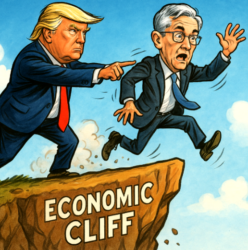ABN Amro venter, at ECB på sit møde i morgen vil fortsætte sit stimulerende opkøbsprogram, også selv om der nu er gang i økonomien. På længere sigt er inflationen mere afgørende for ECB’s pengepolitik end den økonomiske vækst.
ECB preview & purchase data
ECB Preview: PEPP pace to be extended, risks balanced while overall message dovish –
The ECB’s Governing Council meets this Thursday. In this preview, we assess the likely changes in policy, communication and the staff macro projections. Finally, we also briefly set out what the ECB’s next steps could be in the coming months.
PEPP purchases to be sustained – We judge that the ECB will announce that it will sustain net purchases under the PEPP at the ‘significantly’ higher level in Q3 following the step up in Q2 (compared to the levels seen earlier in the year – see also section on recent ECB purchase trends later in this publication).
The balance of ECB official commentary recently has suggested that they remain committed to sustaining favourable financing conditions. The recent commentary from ECB officials makes sense given recent developments.
First of all, the eurozone sovereign curve has steepened considerably. The rise in yields would not necessarily be a bad thing if the inflation outlook had improved significantly. However, that does not seem to be the case. Although headline inflation has accelerated over recent months, core inflation remains extremely subdued.
Undoubtedly, the economy has turned a corner and rapid economic growth is on the cards in the coming months. Though it is important to note that even with rapid economic growth, spare capacity will likely remain over the medium term.
Projections for growth and inflation probably a bit higher – The ECB will publish its new forecasts for GDP growth and inflation as well on Thursday. In its previous projections the ECB forecast GDP growth of 4.0% in 2021, 4.1% in 2022 and 2.1% in 2023. With regard to inflation, the projections at the end of the central bank’s forecasting period are most interesting, as its policy target concerns the inflation rate in the medium term.
In its March projections, the ECB forecast that headline inflation would be 1.4% and core inflation 1.3% in 2023. When looking at the ECB’s assumption about the pace of vaccination and easing of containment measures, the March projections seem to be roughly in line with recent events. Indeed, the ECB has assumed a noticeable rebound in growth in Q2 and two more strong quarters in the second half of this year. Still, the progress with the vaccine-roll out could change the ECB’s assessment of the risks to the growth outlook (see below).
Nevertheless, a number of other factors will have had an impact on the ECB’s projections. To begin with, the central bank had not yet included the USD 1.9trn Biden fiscal support package in its baseline projections in March. According to the ECB’s own calculations this plan would lift eurozone GDP growth by about 0.3% during the years 2021-2023. The Biden package would have only moderate upward impact on eurozone inflation.
The next factor that will have had some impact on the ECB’s projections is the rise in government bond yields and oil prices since its previous forecasts, which will have a downward impact on GDP growth and on the inflation rate excluding energy. Finally, the publication of the latest growth and inflation numbers will have changed the starting point of average growth and inflation in 2021. For instance the ECB estimated that inflation would be 1.5% in Q2, whereas the average outcome for April and May was 1.8%.
All in all, we expect the central bank to revise its projections for growth and inflation somewhat higher throughout its forecasting period. Still, we expect the projections for core inflation in 2023 (probably 0.1pp higher than in the March projections) to remain well below the ECB’s policy target. Having said that, history has thought that the ECB has the tendency to over-estimate inflation in the medium-term and it could continue to do so.
Balance of risks to the growth outlook to shift – The ECB could well also announce in June that the risks to the economic outlook are now ‘balanced’ rather than to the downside. This is because of the progress with the vaccine roll-out has strengthened the probability of the baseline scenario which sees a re-opening of economies over the coming weeks. Indeed, the first steps have already been taken.
However, as noted above the ECB is still likely to project that inflation will undershoot its goal over the medium term and it is inflation rather than growth that matters. The ECB could emphasise that the inflation outlook remains disappointing and that therefore that monetary policy will remain accommodative. This – together with the PEPP step up – could help offset any hawkish interpretation from shift in its judgement on the risks to the economic outlook and somewhat higher projections.
Next steps – The September Governing Council meeting will be a significant one for the ECB. The central bank will likely announce the outcome of its Strategy Review. One of the key elements of that review will be a more ambitious inflation target (symmetry around 2%). Therefore, the gap between its projection of inflation and its inflation goal will be larger.
At the same time, it is likely to give a stronger signal that the PEPP will indeed likely end in March 2022 and will therefore have a challenge to manage market expectations that an end to the PEPP will not lead to early rate hikes. The ECB could push back against these expectations by strengthening its forward guidance. This can be done by signalling much more explicitly that policy rates will remain on hold for a much longer period than markets expect. Alternatively, it could send the same message indirectly by signalling a much longer period of net purchases under the APP beyond (and perhaps with more flexibility and volume than currently) when the PEPP ends in March 2022.
Euro Fixed Income: Eurosystem buying EUR 100bn of net assets per month now – The monthly figures of the Eurosystem’s net asset purchases under the APP as well as the PEPP showed that the central bank purchased EUR 100.8bn of net assets in May, which was slightly above the EUR 99bn that it had bought in April. However, it marks a 33% increase compared to average monthly purchases at the start of the year.
This clearly reflects the step-up in the pace of monthly asset purchases under the PEPP that the ECB communicated in March (the monthly amount of the APP has remained at EUR 20bn). Indeed, the Eurosystem is currently buying around EUR 80bn per month under the PEPP. Still, total net asset purchases fall well short of the EUR 157bn that the central bank purchased on average during the heydays of the Covid-19 pandemic a year ago. What is more, the current step up of net asset purchases has not prevented a rise in base rates since the end of March.
A breakdown of total net asset purchases by type of purchase programme shows that the vast majority of asset purchases (i.e. 96%) was public sector debt, followed by corporate bonds (7%) and covered bonds (1%). In contrast, commercial paper purchases has been gradually unwound since June of last year, as maturing paper has been reinvested in other markets.
Public sector purchases under PEPP is the main driver of the significant increase of monthly asset purchases. Indeed, public sector purchases increased by around 30% since the beginning of this year as shown in the graph below. What is more, the Eurosystem is buying relatively less French government bonds compared to the capital key (EUR -9bn), whereas it has bought slightly more of Bunds (EUR +9bn) and BTPs (EUR +4bn).
Consequently, the deviation from the capital key has been slightly decreased for Germany and France, whereas it has been increased for Italy. It makes sense that the Eurosystem is catching up on Bund purchases as the ECB would like to keep risk free rates low in the euro area. Besides this, the Eurosystem holds now around +45bn of additional BTPs compared to the capital key.





